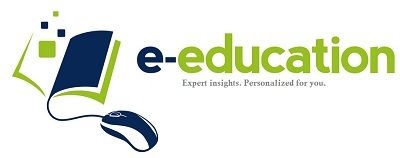A few decades ago, the idea of a digital classroom would have been laughable. But today, more and more colleges and universities are adopting technology that enhances the learning experience for students. From offering a range of digital learning formats to providing easy access to feedback, higher education is benefiting in a big way from technological advancements. Here’s a closer look at how technology is changing the landscape of higher education for the better and improving overall student productivity.
All Kinds of of Digital Learning Formats
In the past, students were limited to learning in a traditional classroom setting. But now, thanks to technology, there are a variety of digital learning formats available. Online courses, for example, have become increasingly popular in recent years. These courses allow students to learn at their own pace and on their own schedule. Additionally, many colleges and universities now offer hybrid courses, which combine online and in-person instruction. This gives students the best of both worlds by allowing them to take advantage of the flexibility of online learning while still getting the benefit of face-to-face interaction with their instructors and classmates.
Better Access to Feedback
Digital feedback is more efficient than traditional methods. Teachers can quickly see which students are struggling with a concept and intervene immediately. They can also easily see which students are excelling and offer them additional challenges. In addition, using technology allows teachers to give more detailed feedback than they could with pencil and paper. For example, they can insert audio or video comments into digital files, or use software programs to highlight specific sections of text. As a result, students are able to receive targeted and customized feedback that can help them improve their performance.
Another advantage of using technology to give feedback is that it increases student engagement. When students receive immediate feedback on their work, they are more likely to be motivated to fix their mistakes and improve their skills. Additionally, being able to see teacher comments in a digital format makes it easier for students to track their progress over time. They can refer back to previous versions of their work to see how far they have come. This type of long-term engagement is beneficial for both teachers and students as it leads to better learning outcomes. Teachers can even create student contracts that can be digitally signed as a promise of commitment to the course.
Software That Helps Lead Students to Their Destination
In recent years, there has been an increasing focus on the importance of providing students with a digital roadmap of their education in higher education. This software can help students to plan and track their progress, identify potential areas of improvement, and set goals for their future. First, it ensures that students are making progress toward their degree. Second, it helps to identify any areas where they may be struggling, and provide resources to help them improve. Finally, it can motivate and encourage students as they see their progress over time. As a result, the use of this software is likely to continue to grow in popularity in the years ahead.
Collaboration Platforms
In recent years, there has been a growing trend towards collaborative learning in higher education. This approach to learning emphasizes group work and discussion, and it has been shown to have a number of benefits. For example, collaborative learning can help students to develop key skills such as communication and problem-solving. It can also promote deeper understanding of the material, as students are required to explain their ideas to others. In addition, collaborative learning is often more enjoyable than traditional lectures, and it can help to build strong relationships between students. With the increasing use of technology in education, collaborative platforms such as Google Classroom and Blackboard are becoming increasingly popular. These platforms allow students to share resources, work on projects together, and receive feedback from their peers. They also provide an efficient way for teachers to manage and assess student work. As collaborative learning becomes more widespread, it is important that higher education institutions make use of suitable platforms to support this approach.
Mobile Compatibility
In today’s world, it’s important for everything to be mobile-friendly—and that includes higher education resources. Many colleges and universities have developed mobile apps that allow students to access their coursework from their phones or tablets. Additionally, many professors are now using platforms like Canvas Mobile so they can post announcements or upload assignments directly to their students’ phones. This mobile functionality ensures that no student has an excuse for missing an assignment or being unaware of important news or updates from their school.
The use of technology in higher education has numerous benefits for both students and instructors alike. From providing easy access to feedback to offering a range of digital learning formats, technology has changed higher education for the better—and there’s no turning back now!

